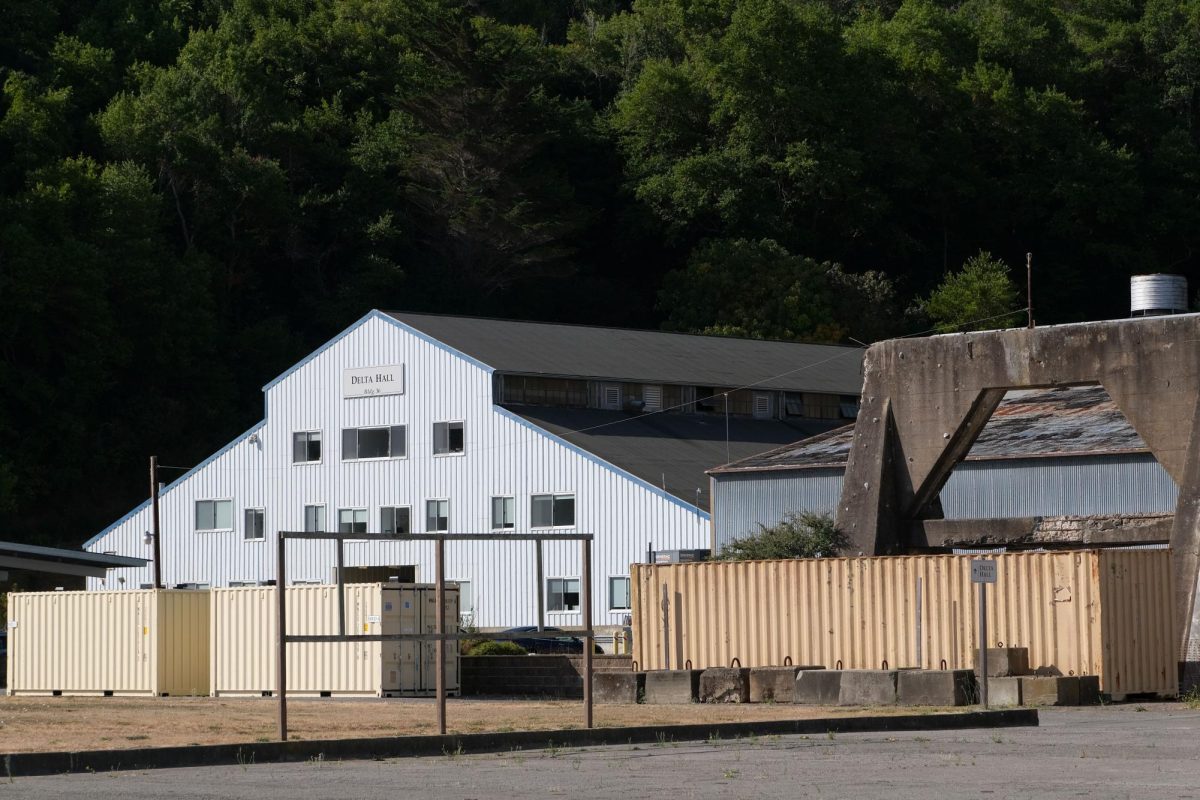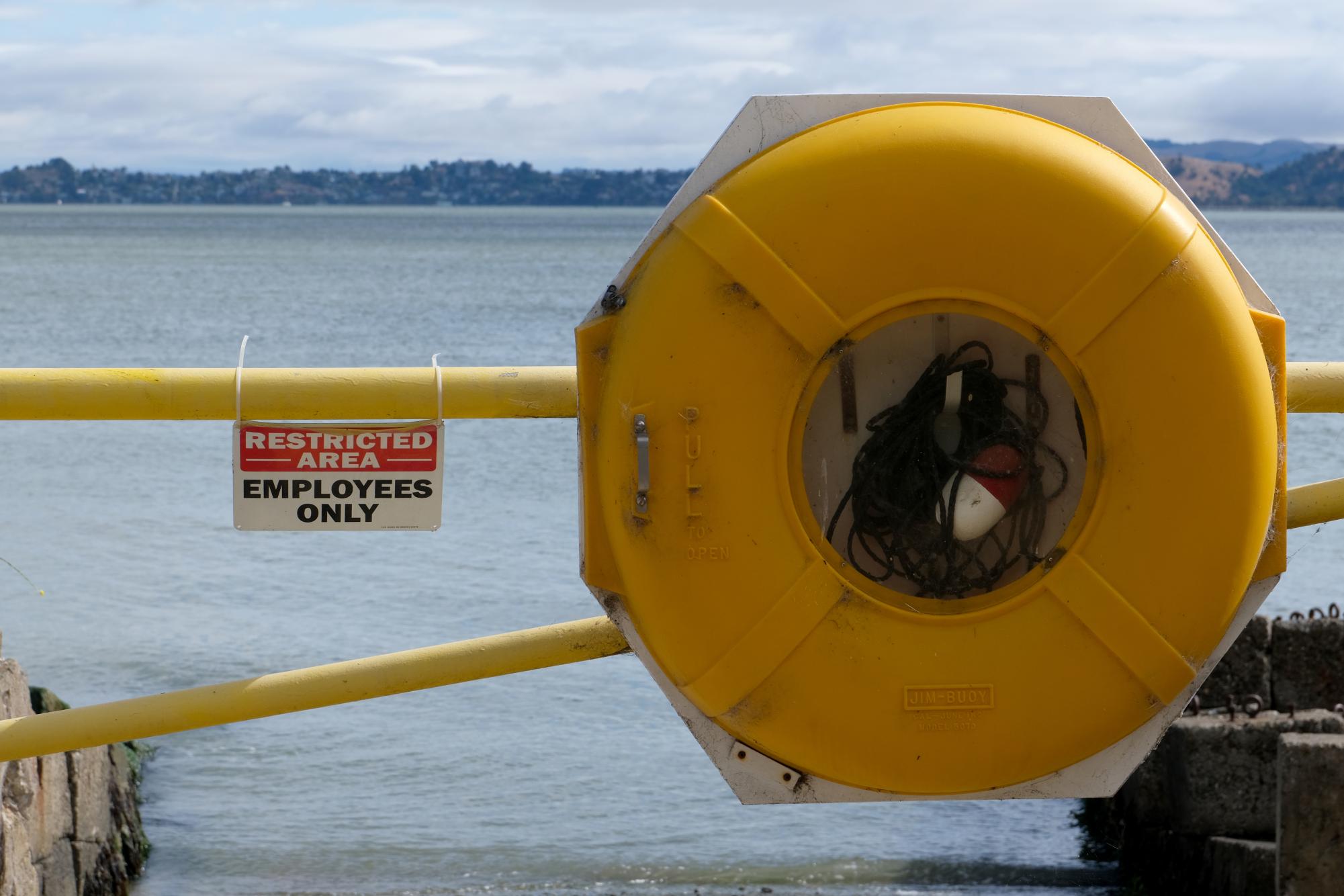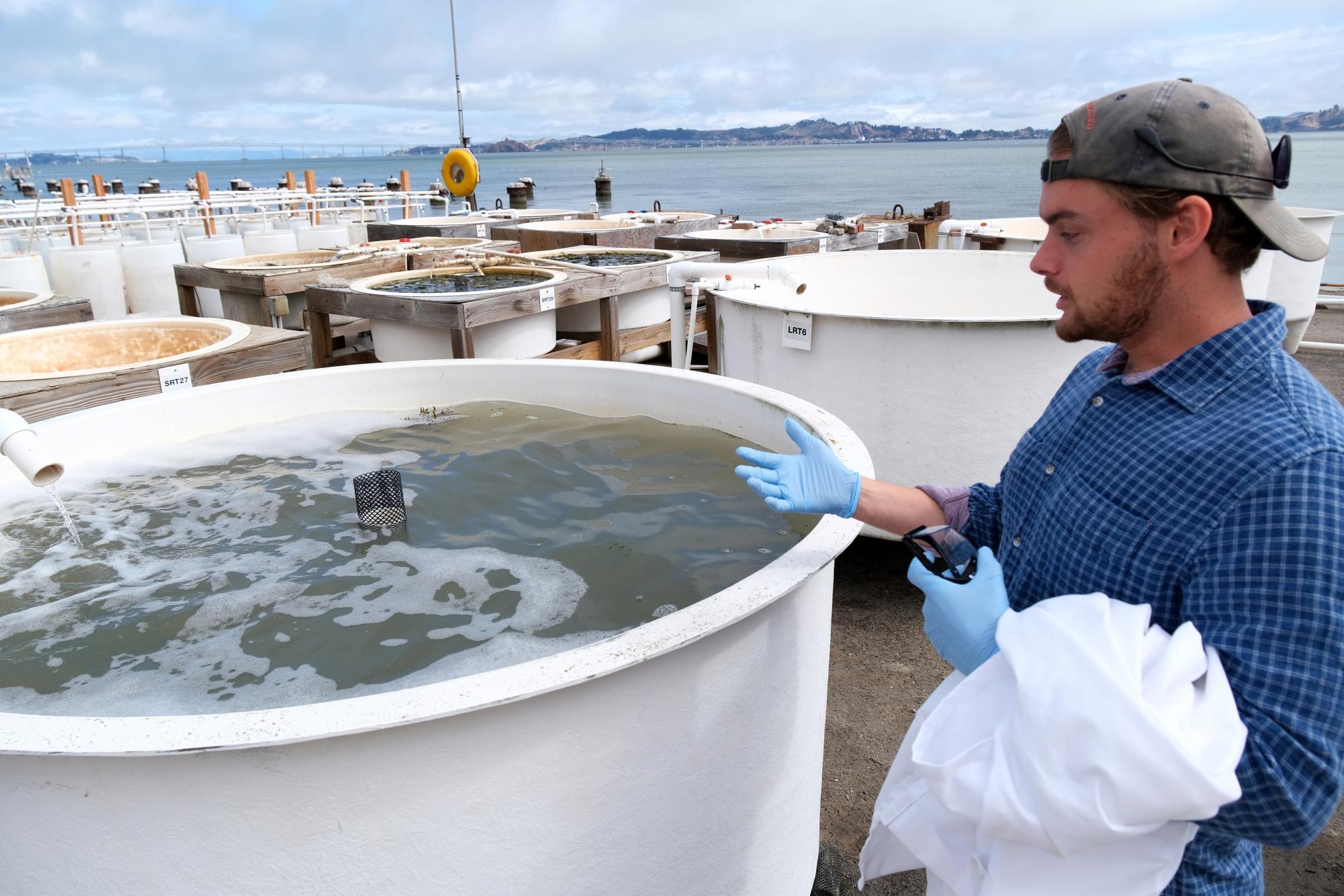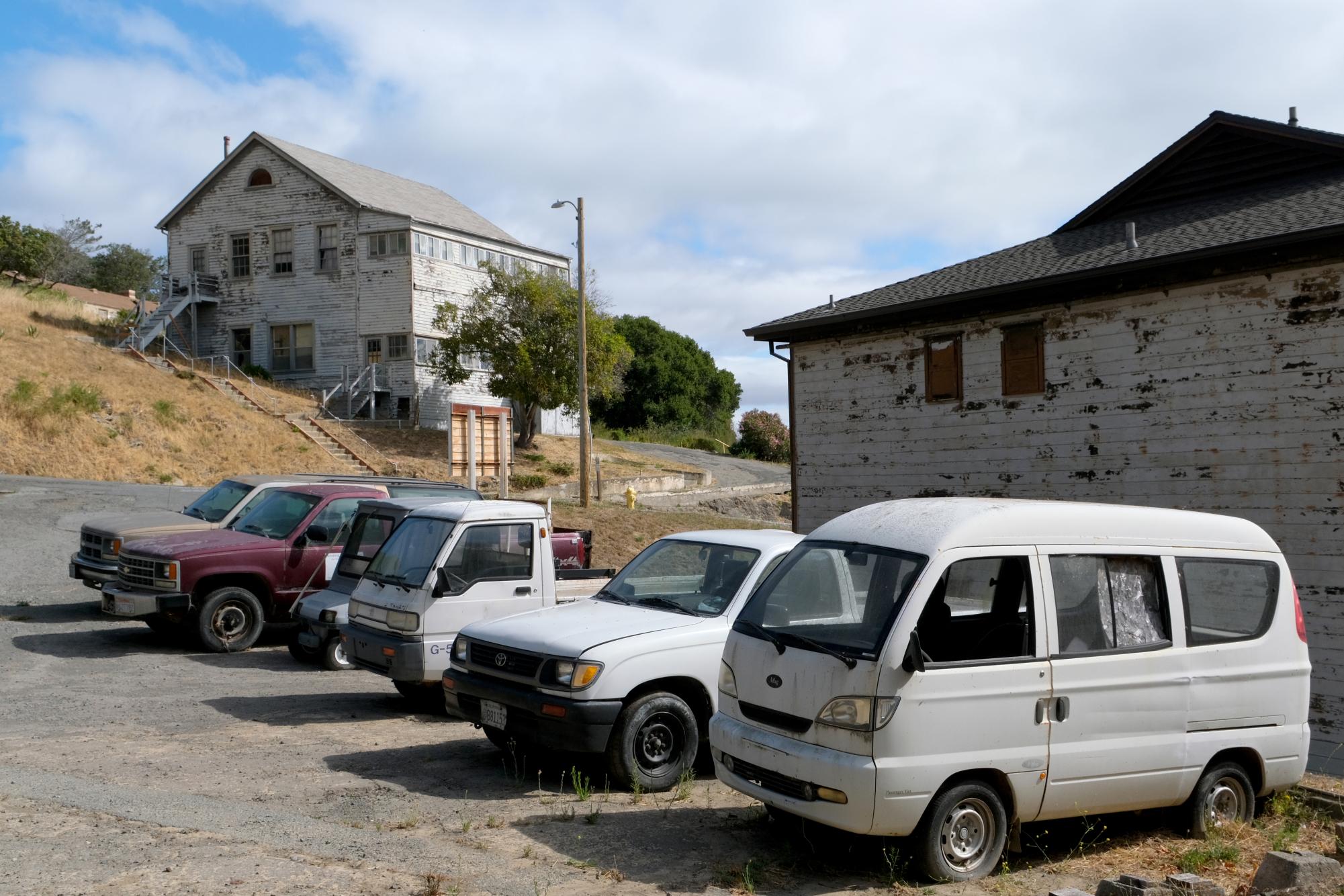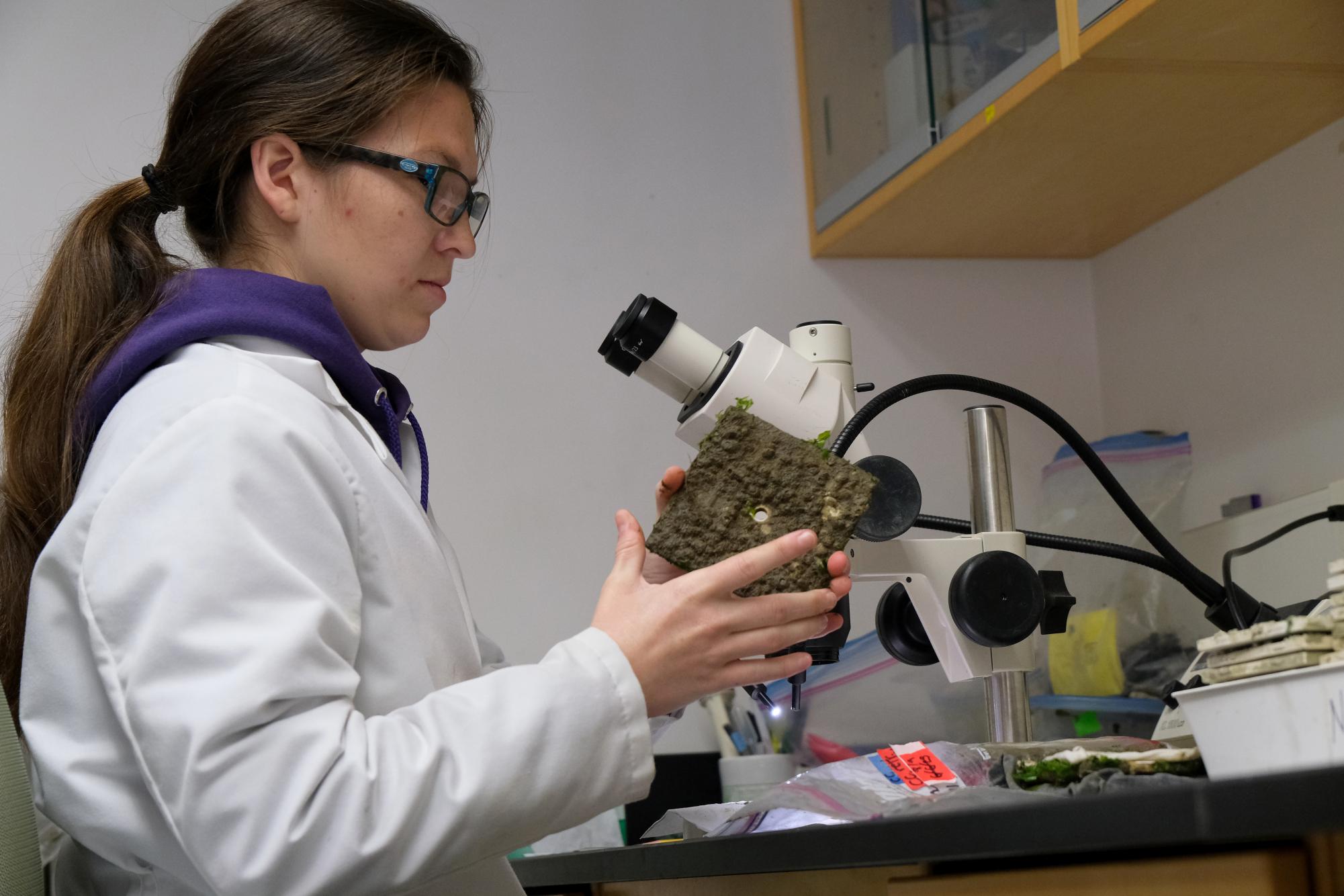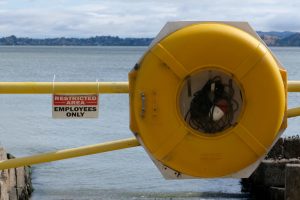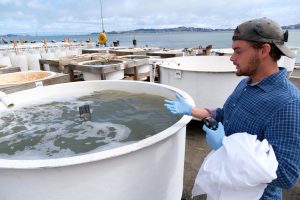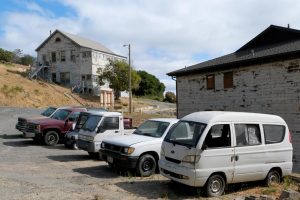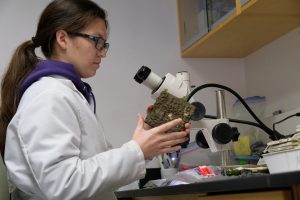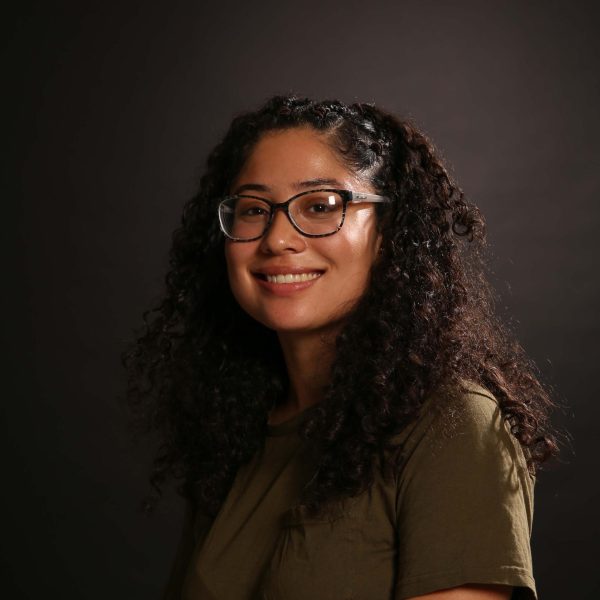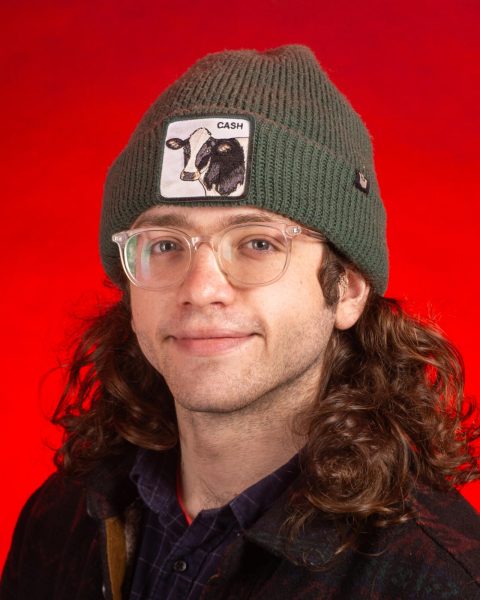Starting on a windy unpaved road accompanied by trees that cover the sun, you begin to make your way to SF State’s Tiburon campus. After passing the South Barracks with chips in its wood dating as far back as WWII, you finally meet the sea. On one side, you see the perfect image of the Richmond-San Rafael bridge while on the other, seals and birds roam free.
Upon entering the Delta Hall, where the main laboratories, offices and classrooms are located, there is a range of experiments being conducted by researchers and SF State students such as shoreline restoration and the monitoring of sea level rise in connection to climate change. But despite the center’s natural pleasantries and the importance of its research, SF State may soon turn away from the center, citing its lack of financial sustainability amidst broader university budget concerns.
SF State’s Estuary & Ocean Science Center is located on the university’s Romberg Tiburon Campus, just 20 miles from SF State’s main campus. This 53-acre center looks on the San Francisco Bay and despite its 8 decade-long streak without any renovations, this campus is rich with history.
In 1977, the proposal to develop a field station and marine lab dedicated to the study of the San Francisco Bay was submitted by then-SF State president, Paul Romberg. The following year, several building renovations were completed including a greenhouse and experimental tanks built near the campus’s boat ramp.
With the launch of the Estuary and Ocean Science (EOS) Center in January of 2017, the Romberg Tiburon Center for Environmental Studies was renamed to the Romberg Tiburon Campus, in honor of Romberg himself. With the SF Bay National Estuarine Research Reserve and the Smithsonian Environmental Research Center’s west coast lab headquartered at the site, it has become the core and link of many collaborative estuarine and coastal ecosystem research and educational activities.
Together, students and researchers cover most of the sensitive issues in the bay today, including nature-based solutions to climate change, impacts of freshwater diversion, human additions of pollutants, invasive species, wetland restoration, harmful algal blooms and marine mammal and bird conservation.
Since June 2022, Katharyn Boyer has acted as the Interim Executive Director of the EOS Center. She has also been a biology faculty member since 2004, making her experience with SF State over 20 years.
Additional research also includes monitoring the effects of climate change and changes of sea level rise using the science and equipment provided by the EOS Center.
“A lot of the restoration work that my research lab does now is very much focused on how to use native species for climate change adaptation or mitigation,” Boyer said. “So we’ve been interested in these native species and their restoration for many decades but now we’re interested in thinking about how we can do that restoration in a way that serves other purposes for climate adaptation and mitigation.”
Students use fleet boats in order to actively get involved in the research and have the opportunity to learn how to restore and understand the environments of the San Francisco Bay firsthand.
“Students participate in all the research that we do and the EOS Center is essential for that research, because it’s right on the bay,” said Boyer. “It allows us to get out to the places that we’re restoring or studying to understand how best to do the restoration with our boats.”
Additionally, the EOS Center provides the researchers and students with a watering system called a bay water system, where water from the bay is extracted from a pipe and filled into the tanks and aquaria that is used within the center for experiments. This system is unique to the center in the sense that it simulates the environment of the bay within the center.
“It means we have an opportunity to simulate the bay conditions and study them and to do the restoration and conservation work that no one else has the ability to do,” Boyer said. “And so it’s an amazing resource that San Francisco State has that no one else has. None of them have this kind of a system on the bay that allows us to manipulate the conditions like this and to really understand how the bay works.”
Without this center, the research faces danger of discontinuation and SF State’s mission to connect science, society and the sea will cease to exist. However, despite the EOS Center’s current estate, SF State’s current president, Lynn Mahoney, states that no plans to improve the buildings at the site are in the works.
“The answer is no. We have no plans to touch those buildings,” President Mahoney said. “It has to support itself,” President Mahoney said. “I need every penny we have to support the campus here.”
Now that the facility is facing financial issues concerning upkeep and an uncertain future, members of the SF State community such as Adam Paganini are reflecting on the center’s importance to the SF State community.
“I know every part of SF State is looking for budget solutions, so I don’t think there’s any malicious intent on the part of the university to target the EOS Center for termination,”
Paganini said. “But it’s a gem of the university, it is definitely a bright spot on the university’s record. That would be a total waste if they let it die.”
Paganini, the former Interdisciplinary Marine and Estuarine Sciences graduate program coordinator, was a student at the EOS Center in 2009. He proceeded to enter the graduate program at the center in Jonathon Stillman’s lab and graduated from the program with his master’s degree. He then worked as a monitoring technician at the center and conducted research.
During his graduate experience, Paganini remembered how the EOS Center’s minimal funding affected the students and their ability to perform experiments vital to their education and careers.
“There wasn’t infrastructure ready to go for a grad student who wanted to study XYZ,” Paganini said. “You basically had to build it from scratch.”
According to Paganini, the student along with the professor would have to accumulate the money needed to conduct research and construct an experimental setup at the center. As a result, students would learn how to build scientific equipment from scratch. This raised other issues, as graduate students would spend more time building equipment than actually working on their assignments.
Jason Porth, vice president for University Enterprises at SF State, said President Mahoney asked a group of people to form the Committee for Fiscal and Operational Sustainability, which has been meeting since May 2023. The committee works to evaluate the costs of running the EOS Center, the risks and opportunities there and determine whether the campus can have a financially sustainable future.
“The committee was asked to look at a range of alternatives,” Porth said. “Everything from what would happen if we had to look at everything that happens out there and move back to the Holloway campus and discontinue use of the site all the way to how do we invest in the site and find ways that might ultimately generate revenue going forward.”
Caitlin Steele, the director of Sustainability and Energy at SF State and one of the committee’s 11 members, is tasked with evaluating the site’s physicalities and devising a plan based on what new buildings could be built and what pre-existing buildings could be repaired. She has been contemplating these different options for what to do with the site since before the pandemic, such as enlarging its conference center or converting the center to a housing site.
This updated vision plan has yet to be released, but the latest vision plan from 2019 mentions these improvements.
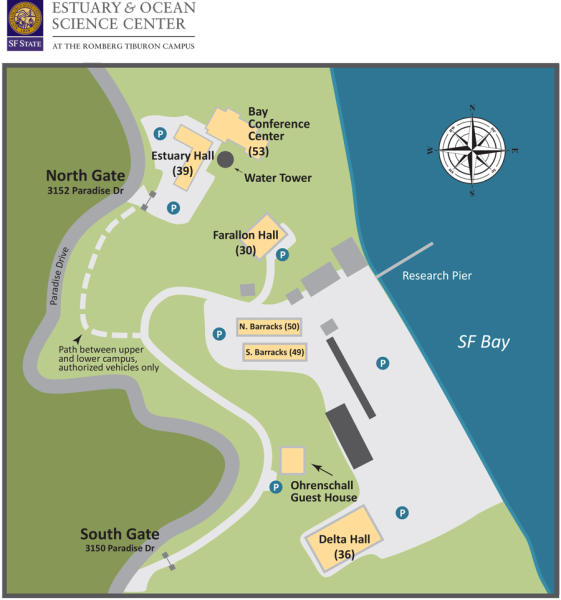
“The committee was thinking quite broadly about how we might find ways to make the site valuable to continue the important research and scholarship that goes on there, but also to address some of the most vexing issues facing the Bay Area,” Porth said. [28]
Porth was referring to two specific buildings on-site that were barracks for enlisted naval personnel who worked on the site. According to Porth, each of the barracks is just under 18,000 square feet. However, the appropriate federal funds needed to support a renovation would cost around $20 million per building.
According to Steele, one of the main issues with Tiburon’s site is students commuting from the SF State’s main campus to the Tiburon campus.
“In the vision plan, we looked at transit as it has always been an issue with the Tiburon’s site,” Steele said.
But according to Paganini, SF State had a shuttle that would go from the main campus to Tiburon twice a week. The shuttle was discontinued eight or nine years ago, Paganini said.
“In fact, there was one point in which I was hired to drive that shuttle for a semester as a grad student,” Paganini said. “That was very helpful because, you know, that would allow students from the main campus to come take classes out at the EOS Center and it would also allow students at the EOS Center to go to campus together.”
Since then, there hasn’t been any recorded efforts by the university to bring an alternate method of transportation for students to commute to the Tiburon campus specifically. However, SF State has provided students with a regional transit pass called the Clipper BayPass, which gives students unlimited free access to all Bay Area transit systems that use the Clipper system, such as Muni and BART.
“There was nothing since then, in terms of transportation, that I can think of from the university perspective that would help students get out there,” Paganini said. “And getting out there is a pain in the ass.”
According to the EOS Center homepage, the only listed way to get to the Tiburon campus from the main campus is by driving. According to Google Maps, it takes 40 minutes by car and over two hours by train.
“I think that there are a lot of students and others on our main campus who don’t even know that we have this facility out in Tiburon,” Boyer said. “And it’s your facility. And now it’s your place to come and be on the water and learn and participate and gain the skills you need for this job market.”
Paganini also added that places like the EOS Center are important in this time in history and vital for our futures, given the escalating effects of climate change.
“We’re dealing with the climate crisis and an environmental justice rectification that needs to happen,” Paganini said. “I cannot overstate that, because this is where the next generation of STEM professionals and climate change researchers are going to learn their craft. And if you don’t invest in that, you’re creating a vacuum that can be filled by other things that aren’t going to help with the climate crisis and aren’t going to help solve societal challenges that climate change is causing.”



